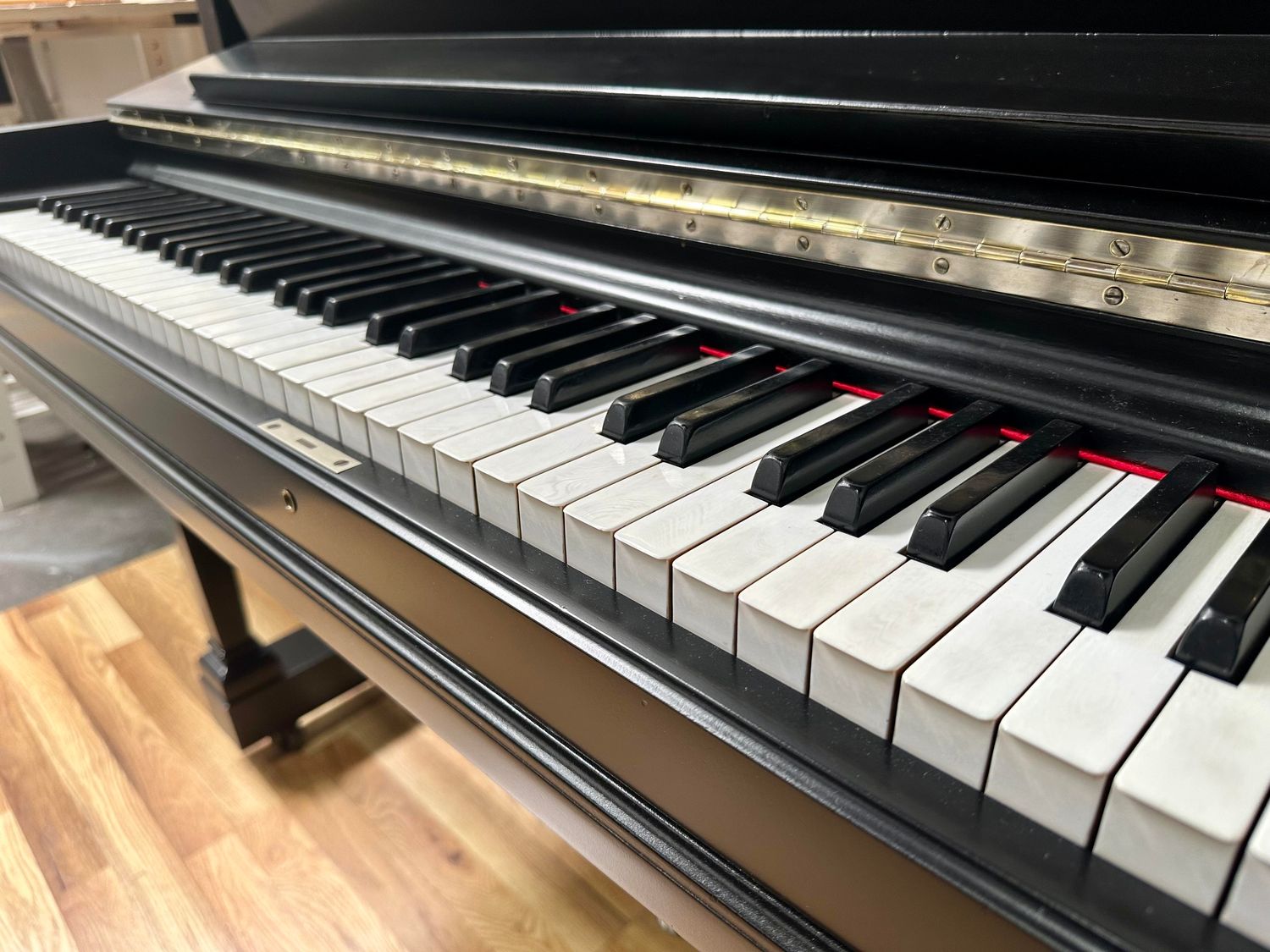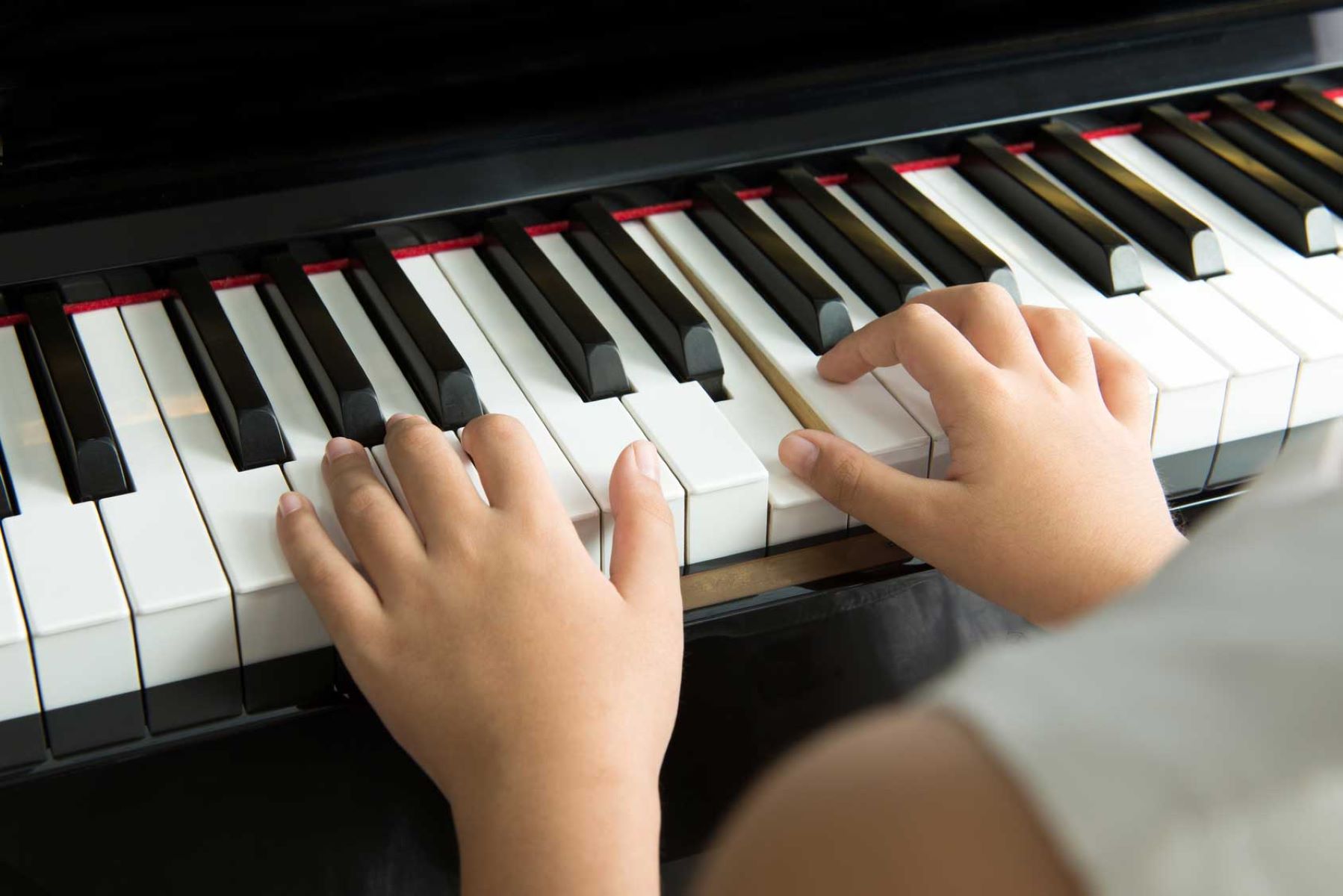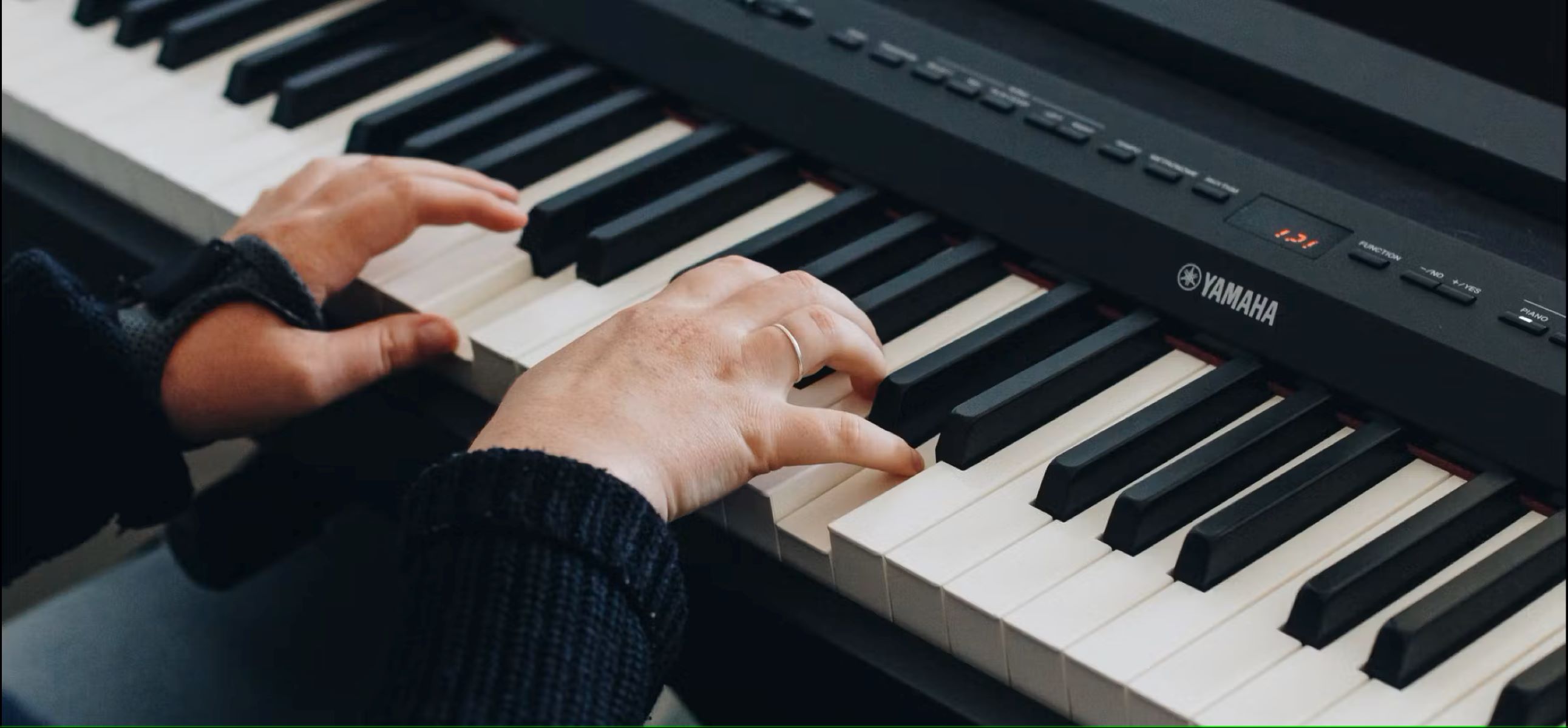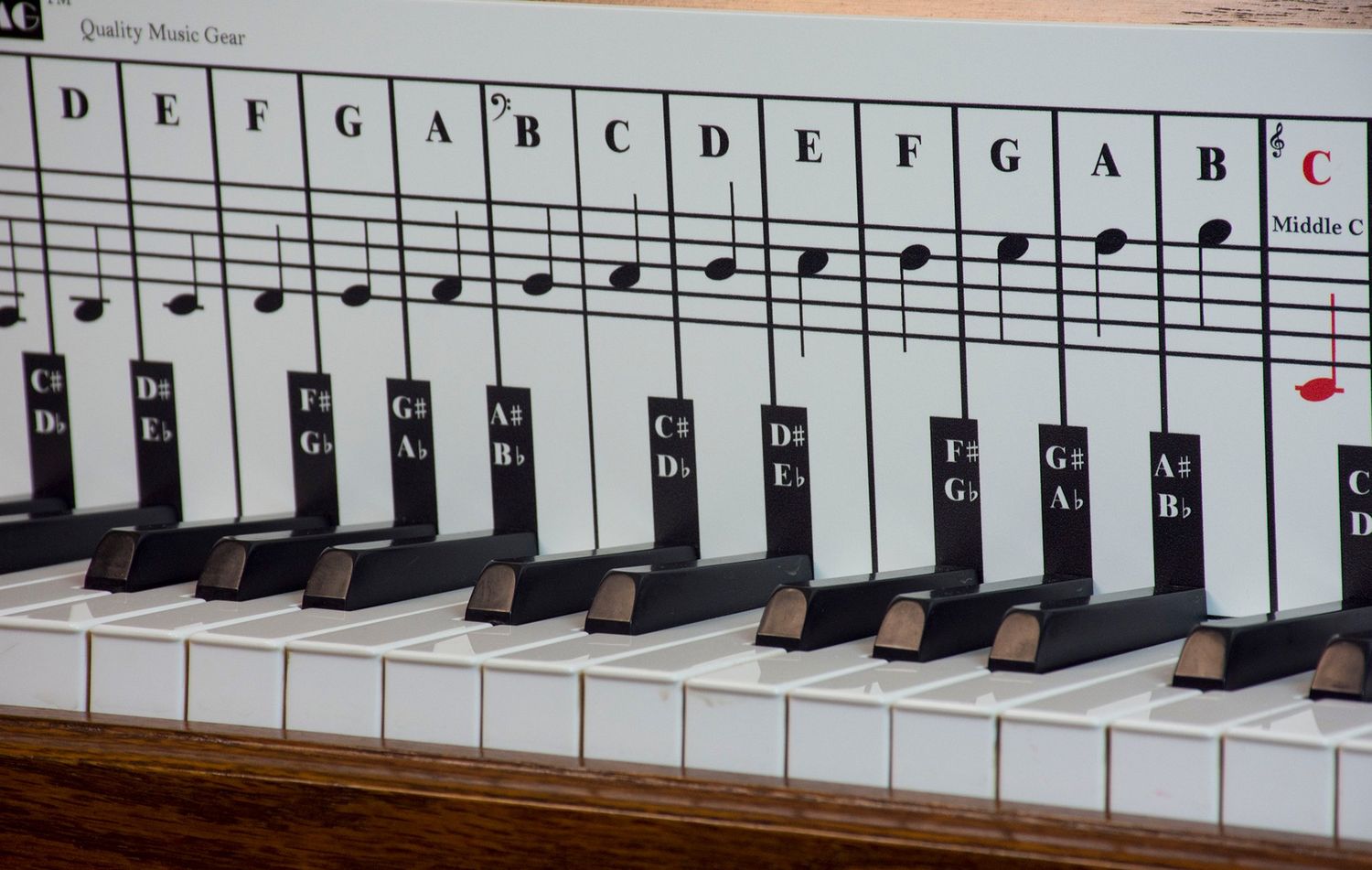Home>Instruments>Piano>How To Play Piano For Kids
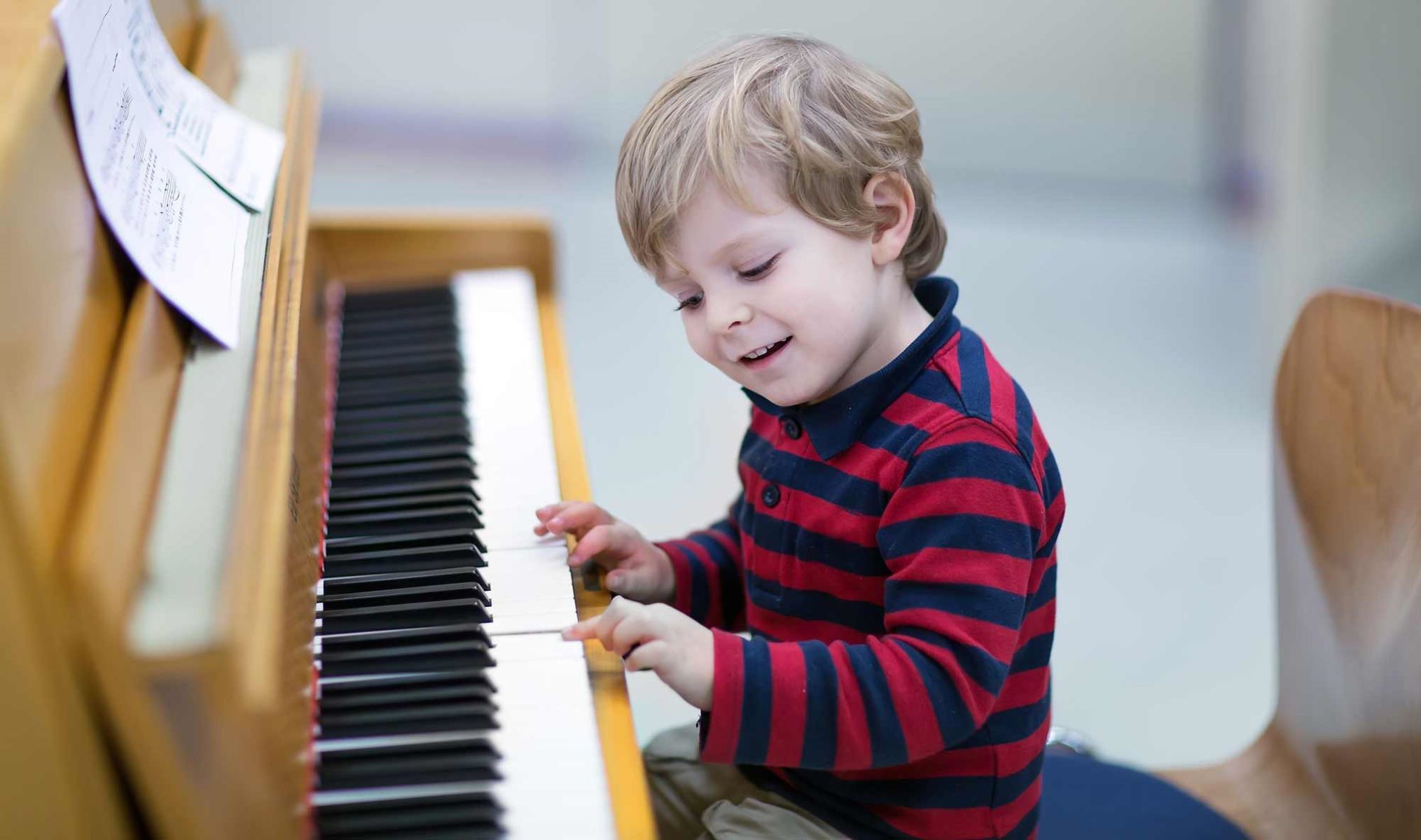

Piano
How To Play Piano For Kids
Published: February 11, 2024
Learn how to play piano for kids with fun and easy lessons. Discover the joy of music with our engaging piano tutorials designed for young learners. Start your child's musical journey today!
(Many of the links in this article redirect to a specific reviewed product. Your purchase of these products through affiliate links helps to generate commission for AudioLover.com, at no extra cost. Learn more)
Table of Contents
Introduction
Introduction
Playing the piano is a wonderful and enriching experience for children. Not only does it cultivate a lifelong appreciation for music, but it also enhances cognitive abilities, discipline, and creativity. As a parent or guardian, you have the incredible opportunity to introduce your child to the captivating world of piano playing. In this article, we will explore the fundamentals of playing the piano for kids, offering valuable insights, tips, and resources to help your child embark on this melodious journey.
Learning to play the piano at a young age can have a profound impact on a child's overall development. It fosters patience, perseverance, and the ability to express emotions through music. Moreover, mastering the piano instills a sense of accomplishment and boosts confidence, which can positively influence various aspects of a child's life.
As we delve into the intricacies of piano playing for kids, it's important to remember that every child is unique. Some may exhibit a natural affinity for music, while others might require gentle encouragement and guidance. Regardless of your child's initial aptitude, nurturing their interest in the piano can be a rewarding experience for both you and your little maestro.
Throughout this article, we will cover the essential steps to initiate your child's piano journey, from understanding the basics of piano to learning simple songs and incorporating fun practice tips and games. By the end of this guide, you will be equipped with the knowledge and inspiration to support your child as they explore the enchanting realm of piano music. Let's embark on this harmonious adventure together!
Getting Started with Piano
Embarking on a musical journey with the piano is an exciting endeavor for kids. Before diving into the technicalities of playing the instrument, it’s important to set the stage for a positive and engaging learning experience.
First and foremost, it’s essential to choose an appropriate instrument for your child. Acquiring a suitable keyboard or piano that aligns with your child’s age, size, and skill level is crucial. For young beginners, a keyboard with weighted keys and a minimum of 61 keys is recommended, as it emulates the feel of a traditional piano while offering versatility in sound and functionality.
Next, consider the learning environment. Creating a designated space for the piano, free from distractions and conducive to focused practice, can greatly enhance your child’s musical development. Ensure that the piano or keyboard is comfortably positioned at an appropriate height, allowing your child to maintain good posture and hand positioning while playing.
Once the instrument and practice area are established, it’s time to seek a qualified piano teacher or reputable online learning platform. A skilled instructor can introduce your child to the fundamentals of piano playing, instilling proper technique, music theory, and a passion for music. Alternatively, interactive online resources equipped with engaging tutorials and structured lesson plans can also provide a solid foundation for young learners.
Introducing your child to the piano can be a collaborative and inspiring process. Encourage their curiosity and creativity by exploring different sounds, experimenting with basic melodies, and fostering a sense of playfulness during practice sessions. By infusing a sense of joy and exploration into the learning process, you can ignite your child’s enthusiasm for the piano and lay the groundwork for a fulfilling musical journey.
Understanding the Basics of Piano
Before diving into the enchanting world of melodies and harmonies, it’s essential for kids to grasp the fundamental components of the piano. Understanding the layout of the keyboard, basic music notation, and essential playing techniques sets the stage for a fulfilling musical journey.
The keyboard layout serves as the canvas for musical expression. Introduce your child to the arrangement of keys, emphasizing the distinction between white and black keys and explaining the concept of octaves. Encourage them to explore the tactile and auditory aspects of the keys, fostering a sense of familiarity and comfort with the instrument.
Furthermore, familiarize your child with basic music notation, including the staff, treble clef, and bass clef. Introduce the concept of musical notes and their corresponding positions on the staff, laying the groundwork for reading and interpreting sheet music. Engaging in simple rhythm exercises and clapping along to basic note values can make the learning process interactive and enjoyable.
As your child begins to navigate the keyboard and understand musical notation, it’s essential to introduce foundational playing techniques. Emphasize proper hand positioning, posture, and finger placement, cultivating a foundation for dexterity and control. Encourage your child to practice scales and simple exercises that promote finger independence and strength, nurturing their physical connection to the instrument.
Understanding the basics of the piano paves the way for a seamless transition into playing melodies and songs. By instilling a solid comprehension of the keyboard layout, music notation, and playing techniques, you empower your child to embark on a melodious adventure with confidence and enthusiasm.
Learning Simple Songs
As your child becomes acquainted with the piano’s layout and fundamental techniques, it’s time to introduce the joy of playing simple songs. Incorporating familiar melodies and age-appropriate tunes not only cultivates a sense of accomplishment but also ignites a passion for music in young learners.
Begin by selecting familiar nursery rhymes, children’s songs, or popular tunes that resonate with your child. These recognizable melodies not only capture their interest but also provide a valuable opportunity to apply their growing knowledge of the keyboard and music notation. Encourage your child to identify the corresponding notes on the keyboard and gradually piece together the melodies, fostering a sense of musical independence.
Introduce the concept of hand coordination by guiding your child through basic songs that involve playing simple melodies with the right hand while maintaining a foundational chord progression with the left hand. This approach not only enhances their dexterity but also instills an understanding of harmony and accompaniment, laying the groundwork for more complex musical arrangements in the future.
Additionally, consider incorporating interactive learning tools and resources such as beginner-friendly sheet music, instructional videos, or piano apps designed for young learners. These engaging aids can augment your child’s musical exploration, offering visual and auditory reinforcement as they delve into the enchanting world of piano playing.
Celebrate each milestone as your child masters a new song, fostering a sense of pride and accomplishment. Encourage them to share their musical achievements with family and friends, nurturing their confidence and enthusiasm for playing the piano. By embracing the magic of simple songs, your child not only develops musical proficiency but also discovers the boundless joy of expressing themselves through music.
Practice Tips for Kids
Effective and enjoyable practice sessions are essential for nurturing a child’s passion for playing the piano. By incorporating engaging techniques and fostering a positive practice environment, you can empower your child to embrace the learning process with enthusiasm and dedication.
Establish a consistent practice routine that aligns with your child’s schedule and attention span. Short, focused practice sessions, tailored to their age and skill level, are more beneficial than prolonged, exhaustive sessions. Encourage regular but manageable practice intervals, allowing for gradual skill development and retention.
Introduce a variety of practice activities to keep your child engaged and motivated. Incorporate fun exercises that focus on finger agility, rhythm recognition, and ear training. Interactive games, such as note-naming challenges and rhythm clap-alongs, can transform practice sessions into enjoyable musical adventures.
Encourage your child to explore diverse musical genres and styles, from classical compositions to contemporary tunes that resonate with their interests. Embracing a diverse repertoire fosters a well-rounded musical appreciation and allows your child to discover the boundless possibilities of piano playing.
Offer constructive feedback and positive reinforcement during practice sessions. Celebrate their progress, no matter how small, and provide gentle guidance to address areas that require improvement. Cultivate a nurturing and supportive practice environment, emphasizing the joy of learning and growth.
Lastly, lead by example and showcase the joy of music through your own enthusiasm and involvement. Play duets with your child, share your favorite musical pieces, and express the joy of musical expression. By fostering a shared passion for music, you create a harmonious bond that enriches your child’s musical journey.
Fun Piano Games for Kids
Introducing engaging and interactive games into your child’s piano practice not only infuses fun into the learning process but also enhances their musical skills and creativity. By incorporating playful activities, you can transform piano practice into an enjoyable and rewarding experience for your young maestro.
1. Musical Treasure Hunt: Hide small musical trinkets or note cards around the practice area, each labeled with a musical symbol or a note. Encourage your child to find and collect these treasures while identifying the musical elements written on each item. This game fosters visual recognition of musical symbols and notes.
2. Rhythm Simon Says: Create a rhythmic variation of the classic Simon Says game. Clap out different rhythms and have your child mimic them. As the game progresses, switch roles, allowing your child to lead and create their own rhythmic patterns. This activity enhances rhythm recognition and fosters a sense of rhythmic creativity.
3. Keyboard Scavenger Hunt: Design a scavenger hunt that prompts your child to locate specific keys or sequences on the keyboard based on musical clues. This game reinforces keyboard familiarity and note recognition while adding an element of adventurous discovery to piano practice.
4. Musical Memory Match: Create a set of musical note cards and lay them face down. Encourage your child to flip over two cards at a time, aiming to find matching pairs of notes. This game enhances note recognition and memory retention while adding an element of friendly competition and excitement.
5. Piano Charades: Incorporate a musical twist into the classic game of charades. Encourage your child to act out musical terms, symbols, or even famous melodies while you guess the musical elements they are portraying. This game promotes musical vocabulary and expressive interpretation.
By infusing piano practice with these engaging games, you can foster a love for music and learning in your child while transforming practice sessions into delightful and memorable experiences.
Conclusion
Embarking on a piano journey with your child is a harmonious endeavor that nurtures creativity, discipline, and a profound appreciation for music. By laying a strong foundation and infusing the learning process with joy and exploration, you can cultivate a lifelong passion for piano playing in your young maestro.
As you guide your child through the fundamentals of piano playing, from understanding the keyboard layout to mastering simple songs, remember that patience, encouragement, and a nurturing environment are essential components of their musical growth. Embrace the opportunity to witness their musical abilities blossom and celebrate each step of their melodious journey.
By incorporating engaging practice tips, interactive games, and a diverse repertoire of musical pieces, you create a vibrant and enriching musical experience for your child. Encourage them to express themselves through music, celebrate their achievements, and instill a love for the piano that will resonate throughout their lives.
Through the shared joy of music, you forge a bond that transcends the notes on the keyboard, fostering a deeper connection and understanding between you and your child. Embrace the melodic moments, the triumphant performances, and the musical discoveries that await as your child’s piano odyssey unfolds.
As your child’s musical journey continues to flourish, remember that the true essence of piano playing lies not only in technical proficiency but in the emotional expression and storytelling woven into each melody. Embrace the magic of music, nurture their love for the piano, and witness the transformative power of music in shaping their lives.

